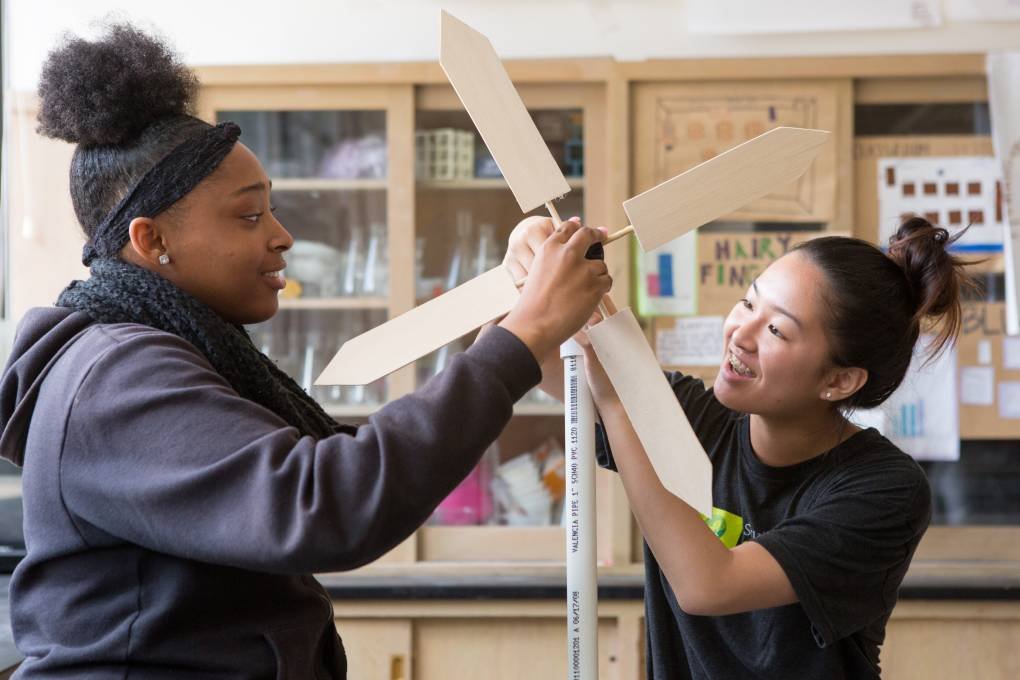But just what is “climate literacy”? What are the ABCs, the grammar and vocabulary, of climate change?
The U.N. and other leading global organizations have identified education at all levels and across disciplines as a key strategy for fighting the climate crisis. The world is going through a historically rapid transition to clean energy and sustainable infrastructure, and the workforce is thirsty for people with the skills to do the necessary climate mitigation and adaptation work. Communities also need empowered citizens to push back against fossil fuel interests. But as of now, few states have comprehensive climate education, and most of the lessons that exist are confined to science classes — lacking in areas like justice and solutions.
Colorado’s seal of climate literacy, which high school graduates can earn through a combination of coursework and out-of-school projects, is one attempt to build support for more comprehensive climate education. Another attempt was on display in late September. The U.S. Global Change Research Program, with input from agencies including the State Department, NASA and the Department of Transportation, released a document called “Climate Literacy: Essential Principles for Understanding and Addressing Climate Change.”
The definition of climate literacy its authors arrived at, after 21 months of work, includes eight essential principles that I’m summarizing here:
- How we know: climate science, interdisciplinary observations and modeling
- Climate change: greenhouse gases shape Earth’s climate
- Causes: burning fossil fuels and other human activities
- Impacts: threats to human life and ecological systems
- Equity: climate justice
- Adaptation: social, built, natural environments
- Mitigation: reducing emissions, net zero by 2050
- Hope and urgency: “A livable and sustainable future for all is possible with rapid, just, and transformational climate action.”
During Climate Week NYC, dozens of educators crowded into a basement room beneath the grand marble Museum of the American Indian, in downtown Manhattan, to hear about the new guide. Standing at the front of the room was Frank Niepold, of the National Oceanic and Atmospheric Administration. He has been engaged in climate education within the federal government for 30 years, and he’s been as involved as anyone in helping this effort see the light of day. “This is a guide for educators, communicators and decision makers,” he said. “We’re not just talking to classroom teachers.”
This guide is technically a third edition. The first one appeared in 2008, during the George W. Bush administration; it was rapidly updated in 2009 when President Barack Obama took office. Then came the Trump administration, and, in Niepold’s words, the thinking was, “Don’t try to do this really complicated thing at that time.” Efforts restarted after Joe Biden was elected president, many new staffers who came in as part of the Inflation Reduction Act provided input to the new guide— and now here we are.
Niepold said that since the 2000s, there’s been a lot of evolution in our collective understanding of both the problem and the solutions. “Before, the document was called ‘essential principles of climate science literacy,’” he said. “We knew that was too narrow. We wanted something that gets you into an action, not just an understanding orientation.”
Still, earlier editions of the document were influential: They informed the Next Generation Science Standards, some version of which is now in use in 48 states. The previous guide was also incorporated into K-12 and college curricula and into museum and park exhibits.
With the new edition, Niepold hopes to see even more impact. The guide is unusually clear and accessible for a government report. The pages are laid out like a textbook, featuring artwork that depicts some of the core themes of climate literacy — as defined in the report – like climate justice and traditional and Indigenous knowledges (the plural s is intentional).
“Success means it would activate all forms of education, all stages, across all disciplines,” and outside the United States as well as within it, Niepold said. He wants to see more prominent NGOs taking on climate education as part of their purview — such as Planet Ed at the Aspen Institute, where, disclosure, I’m an advisor.
Niepold would like to see community-based climate efforts take public communication and workforce development seriously, and to see media coverage promote a fuller picture of climate literacy as well. “Success is: People, regardless of where they’re coming from, understand [climate change] and address it.”
His concern is similar to that of Aisha O’Neil in Colorado: that young people are currently learning about climate change primarily through the media, in a way that’s not solution-oriented, emotionally supportive, or trauma-informed. “That opportunity to be blindsided is high,” Niepold said. That’s why the guideline’s eighth principle unites urgency with hope. Said O’Neil:
“Being taught about issues in a way that emphasizes solutions is telling our youth that they can be part of progress and that the world isn’t doomed.”
Upgrading lessons to meet the moment is taking time. Even in New Jersey, known as a national leader for its comprehensive state-level climate education standards, teachers have shared concern about a lack of resources for implementation and training. Mary Seawell, whose organization Lyra campaigned for the climate literacy seal in Colorado, said her group wanted to take a grassroots, student-led approach. “We want to show demand. What the seal really is doing is creating an opportunity for youth to direct their own learning.”
In order to earn the seal of climate literacy, Colorado students have to take at least one science class in high school — which currently is not a general graduation requirement — and at least one other class that satisfies principles of climate literacy. They also have to engage in some kind of out-of-school learning or action. “This is opt-in,” said Colorado state Sen. Chris Hansen, who co-sponsored the legislation. “The state can’t tell districts what classes to offer. This is for districts that want to have something that is easily recognizable across the state and beyond.”
O’Neil, now a freshman at University of Colorado Boulder, said it’s a good start. Her student group at the college is campaigning for new state curriculum standards. “This is the only logical next move. “ she said. Although the climate seal of literacy encourages climate learning, “we need everyone to be educated, not just the ones who go out of their way.”
O’Neil thinks students could especially use tutelage on taking climate action, something she has had to figure out on her own, with some mentorship from her debate coach and from a state legislator. Planet Ed, for one, has just released a Youth Climate Action Guide with the Nature Conservancy that engages many areas of climate literacy, from mitigation to adaptation to justice.
“I feel like in an ideal world we would learn how climate impacts every element of our lives,” O’Neil said. “Not just the science, but social justice. Policy positions that have created it, and policies that can get us out. My goal right now would be to have students get to a place where they feel like they aren’t terrified by the climate crisis, but empowered by it.”
Contact the editor of this story, Caroline Preston, at 212-870-8965 or preston@hechingerreport.org.





